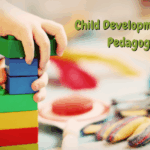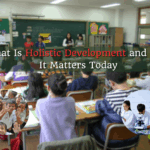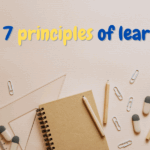Understanding the role of Child Development and Pedagogy is essential in shaping an effective educational environment. In recent years, Schools in Dehradun have become prime examples of institutions that integrate child-centered education with thoughtful teaching methodologies.
This approach ensures students receive both academic and emotional guidance tailored to their developmental needs.
What is Child Development and Pedagogy?

Child Development refers to the physical, cognitive, emotional, and social growth of children from infancy through adolescence. Pedagogy is the art and science of teaching, which includes strategies, approaches, and techniques that educators use to facilitate learning.
Together, Child Development and Pedagogy create a holistic framework that supports students’ all-round progress.
Importance in School Life
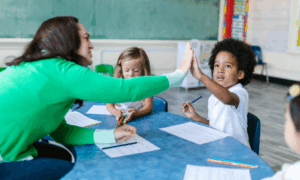
Creating Age-Appropriate Learning Environments
Recognizing developmental milestones allows educators to design activities and lessons that suit the child’s stage of growth. For instance, storytelling and play-based learning work well for early childhood, while inquiry-based learning suits older students.
Enhancing Teacher Effectiveness
When teachers understand Child Development and Pedagogy, they become more responsive to individual learning needs. This insight helps in managing classrooms efficiently and adapting lessons for varied learning styles.
Promoting Emotional and Social Well-being
Children go through various emotional and social changes as they grow. A sound pedagogical approach fosters emotional resilience, empathy, and healthy peer relationships, which are crucial for personal and academic success.
Core Aspects of Child Development

Physical Development
It includes fine and gross motor skills. Schools must integrate physical activities, games, and exercises into daily routines to aid physical health and coordination.
Cognitive Development
This involves the development of thinking, problem-solving, and decision-making skills. Encouraging exploration, questioning, and reasoning enhances intellectual growth.
Emotional Development
Helping children understand and manage their feelings leads to improved self-awareness and emotional intelligence. Activities like journaling and mindfulness are useful tools.
Social Development
Interaction with peers and adults helps in developing communication, cooperation, and conflict-resolution skills. Group projects and class discussions are effective methods.
Pedagogical Strategies That Support Development

Differentiated Instruction
Students learn at different paces. Differentiated instruction allows teachers to modify content, process, and outcomes based on students’ readiness and interests.
Constructivist Approach
This method encourages students to build their own understanding through experience and reflection. Teachers guide rather than instruct, promoting active learning.
Collaborative Learning
Working in groups fosters teamwork and enhances social learning. It also mirrors real-world environments, preparing students for future challenges.
Formative Assessment
Ongoing evaluations help teachers monitor progress and make timely interventions. Feedback is constructive, encouraging students to improve continuously.
Role of Teachers and School Environment

Teachers as Facilitators
Teachers must go beyond delivering content. They should observe, mentor, and guide students while creating a nurturing environment that promotes inquiry and exploration.
Safe and Stimulating Classrooms
A classroom should be emotionally and physically safe. Vibrant learning spaces, availability of resources, and freedom to express are key elements.
Parental Involvement
When schools and parents work together, children receive consistent messages and support. Parent-teacher meetings and workshops can align strategies for a child’s development.
Impact on Student Outcomes
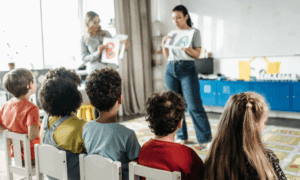
Better Academic Performance
When pedagogy aligns with Child Development and Pedagogy principles, students understand concepts better and retain information longer, leading to improved academic results.
Stronger Life Skills
Skills such as decision-making, empathy, and adaptability are developed through well-structured pedagogical methods and emotional guidance.
Inclusive Education
Understanding the varied needs of children—including those with learning difficulties—ensures that every student gets equal opportunities to succeed.
Real-World Implementation

Case Study: Schools in Dehradun
Many Schools in Dehradun follow progressive teaching practices rooted in child development and pedagogy. By integrating nature-based learning, activity-driven classes, and reflective teaching, they offer students a nurturing and dynamic education model.
Example of an Integrated Classroom
A classroom where students work on science experiments in groups, express findings through presentations, and reflect through journals represents a comprehensive pedagogical model aligned with Child Development and Pedagogy principles.
The Way Forward
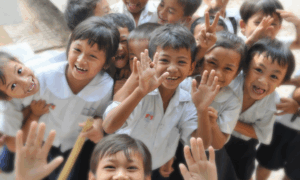
Teacher Training
Regular workshops and training sessions help educators stay updated on developmental psychology and innovative teaching strategies.
Use of Technology
Digital tools like learning apps and interactive platforms can personalize learning experiences and track developmental milestones effectively.
Continuous Curriculum Review
Curricula should evolve with new research in child psychology and educational theory. Schools must adapt content and assessment methods accordingly.
Conclusion
The synergy between Child Development and Pedagogy lays the foundation for meaningful and impactful education. When schools integrate developmental understanding with thoughtful teaching methods, they prepare students not just for exams, but for life. As Schools in Dehradun and beyond continue to innovate in this space, it becomes clear that a balanced, developmentally informed pedagogy is key to nurturing confident, capable, and compassionate individuals.
